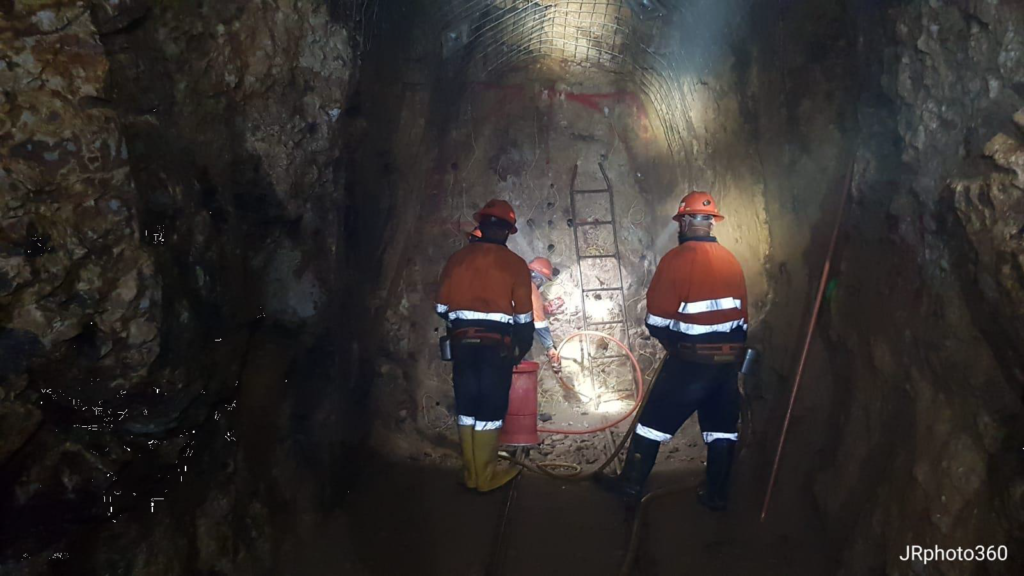Crater Gold Mining Ltd reports from the HGZ gold mining project at Crater Mountain, Papua New Guinea that mining development on the 1930 level adit is now approximately 15 m from the southern extension of the JL vein. Recent mining has exposed gold bearing veinlets and splays and the JL vein is expected to be intersected mid to late next week.
The company will develop an exploration drive along the JL vein and expects to have gold bearing ore to feed the processing plant from the end of next week. The main drive is some 34 m from the NV1 vein which is the primary planned stoping face for mining on the 1930 level.
Crater Gold Managing Director Russ Parker said “We are fast approaching the ore bearing zone and anticipate commencing gold mining shortly with gold bearing ore initially from the JL vein.”
Crater Mountain is located 50 km southwest of Goroka in the Eastern Highlands Province of PNG. Gold mineralisation at the HGZ is confined to several narrow, highly oxidised veins that will be targeted by the small scale, underground mining operation.
The company says “Crater Mountain is shaping up as PNG’s next large scale, gold and copper discovery.”
The model is of a tructurally controlled, sub-volcanic intrusion related mineralisation widespread low sulphidation epithermal gold mineralisation, with small centres of younger high sulphidation epithermal gold mineralisation, overlying possible porphyry copper-gold source.
A JORC compliant inferred resource of 24 Mt at 1.0 g/t Au using a 0.5 g/t Au cutoff for 790,000 oz has been defined in the Main Zone; this includes 9.4 Mt at 1.46 g/t using a 1.0 g/t Au cutoff for 440,000 oz (this inferred resource is open laterally and perhaps to depth, following down a possible steep plunge to the northeast).
Main Zone relatively shallow lying 150 to 300m below the northern end of the Prospect ridge, which comprises low-sulphidation epithermal carbonate-base metal sulphide-gold mixing zone mineralisation in excess of 600 m long by 250 m wide by 150 m thick (with similarities to the Hidden Valley deposit in the nearby Morobe Goldfield).
High Grade Zone (HGZ) high grade high-sulphidation epithermal quartz-pyrite-gold mineralisation, extending from surface to several hundred metres depth (possibly in excess of 500 m); local artisanal miners produced an estimated 15,000 oz from a small area of shallow workings (maximum 50 m depth) in the base of a steep mineralised spur from 2005 to 2012.
A large porphyry copper-gold system identified by drilling at +800 m depth below the northern end of the ridge (“Golpu“ type from Wafi-Golpu in the Morobe Goldfield).
A possible lead-zinc related quartz-carbonate-base metal sulphide-gold stockwork vein and breccia feeder zone (for the Mixing Zone mineralisation) at the margin of the deep intrusion (+600 m) which is causing intense baking and fracturing of the sub-volcanic basement shales underlying the Mixing Zone (Porgera “Waruwari” type).











